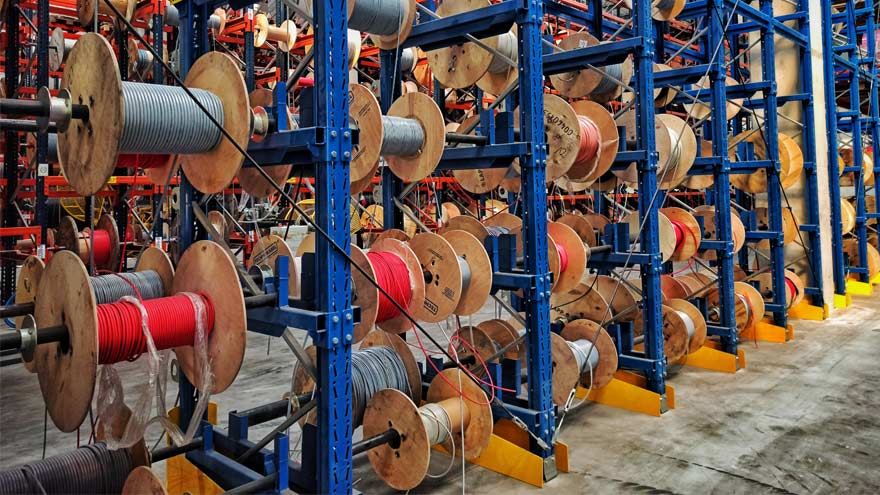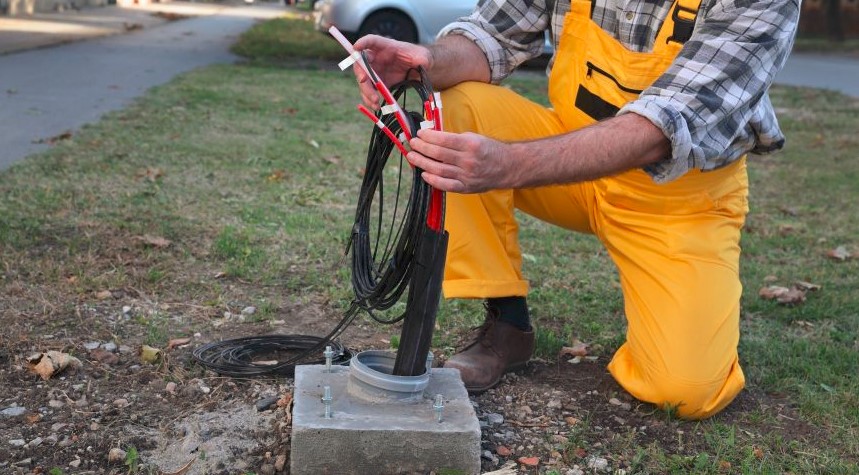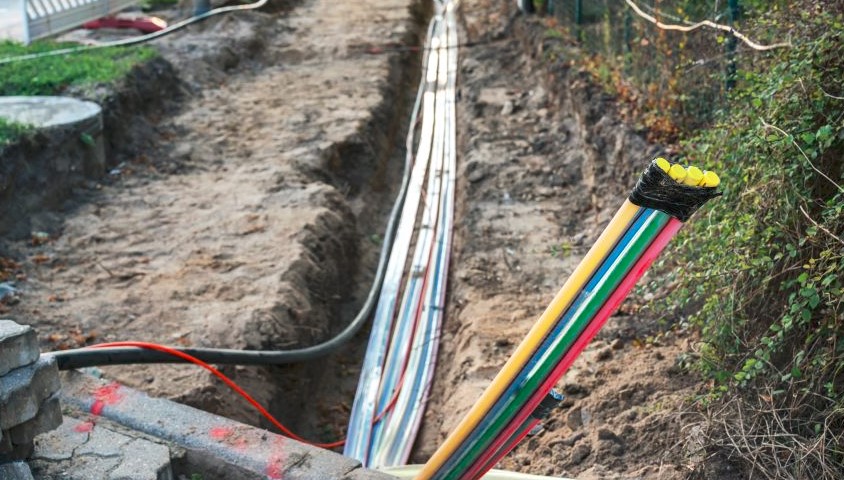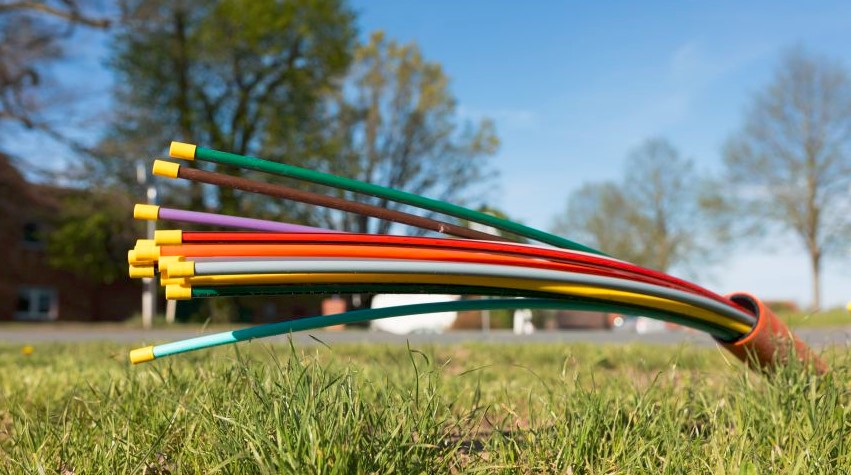External electrical installation should be performed while maintaining the highest level of safety and applicable standards and regulations. One of the key issues is the selection and routing of electrical cables.

From this article you will learn:
- When is it worth performing external electrical installation?
- What electrical cables are used in it?
- Guidelines and good practices related to laying cables in the ground.
- What to consider when selecting earth cables.
External electrical installation – when is it worth doing?
Earth cables are used to transmit electricity in various conditions . You will need them if your property has garden lighting, external devices or one or more socket posts. Power cables for underground installations are extremely resistant to high and low temperatures . They withstand conditions from -40 to even 70 degrees Celsius.
Check out the cables in the Onninen offer
Types of earth cables – which earth cable should I use?
You will find several types of earth cables on the market, differing in structure and purpose. Each of them is insulated and equipped with a protective PVC cover , resistant to solvents and ensuring high mechanical strength. The bending radius of the cables is (depending on the number of wires in the braid) 10-20 degrees.
When selecting earth cables, low voltage (LV) power cables and medium voltage (MV) cables are usually used. Belong to them:
Aluminum earth cables (YAKY)
Aluminum earth cables are intended for operation with low (0.6/1 kV) and medium voltage (3.6/6 kV, 6/10 kV 8.7/15 kV, 12/20 kV, 18/30 kV) . Aluminum is not a durable material , so each cable strand is separated from the others and then insulated using an external PVC sheath. MV power cables are usually single-core . They have a cross-section from 70 to even 1000 mm . It is selected depending on the operating conditions of the cable. If the aluminum earth cable is used in difficult conditions, thickened aluminum is used.
Aluminum earth cable is usually used in city centers, in the construction of low-voltage power lines, indoors and outdoors, or in cable ducts laid directly under the ground.
Copper earth power cables (YKY)
 Copper electric cables are used in installations with various voltages. Copper conducts electricity better than aluminum. It is more durable, flexible and durable . This ensures low failure rate , which is why copper wiring is more popular than aluminum.
Copper electric cables are used in installations with various voltages. Copper conducts electricity better than aluminum. It is more durable, flexible and durable . This ensures low failure rate , which is why copper wiring is more popular than aluminum.
Ground electric cables with copper are most often made of double insulation (the material is usually PVC). This provides them with better electrical conductivity, high water resistance and failure-free operation at low temperatures .
This type of cables are commonly used in residential construction - powering property lighting, socket posts, external devices (e.g. pumps), etc. You will find them in our store.
Check out the cables in the Onninen offer
Copper cables with multi-wire conductors
The material they are made of is also copper. They are characterized by non-uniform vein structure. They are also distinguished by double insulation. Used in municipal energy installations.
Halogen-free earth cables
Halogen-free cables are characterized by freedom of installation - installation can be performed above and below plaster, in concrete and masonry walls or on the floor. This type of power cables can be installed directly outside the building . They are distinguished by insulation made of cross-linked polyethylene.
The halogen-free earth cable has a conductor cross-section ranging from 2 to 5 conductors. It is also capable of operating in low voltage networks . It is mainly used in public places and those with an increased risk of fire.
Methods of laying electric cables in the ground - regulations, standards, good practices
 The first step before starting work should be to designate the route of the cable line . It is best if it is as short as possible and does not interfere with infrastructure elements . In the event of a failure, access to cables must not be impaired. The regulations and requirements for laying cables in the ground are specified in the N-SEP-E-004:2014 standard.
The first step before starting work should be to designate the route of the cable line . It is best if it is as short as possible and does not interfere with infrastructure elements . In the event of a failure, access to cables must not be impaired. The regulations and requirements for laying cables in the ground are specified in the N-SEP-E-004:2014 standard.
Earth conduit and soil type
If the site has sandy soil , cables can be laid at the bottom of the trench. If the ground is not uniform , you need to pour a layer of sand at the bottom, lay an earth cable on it and cover it with another layer. The thickness of the layers is at least 10 cm. The next layer may be native soil.
Cable line marking
It is important to mark the cable line along its entire length and width. This can be done using a mesh or plastic foil in the following colors:
- blue – for cables with rated voltage up to 1 kV,
- red – for cables with rated voltage above 1 kV.
The material used to mark electrical cables should be covered with a layer of sand at a minimum height of 25 cm, but not more than 35 cm above the laid cable.
At what depth should electric cables be laid in the ground?
The N-SEP-E-004 standard defines it in relation to the use and rated voltage of cables:
- minimum depth of 0.5 m - for cables with a rated voltage of less than 1 kV in municipal power installations (road signals, lamps, etc.) located under the sidewalk or road;
- min. 0.7 m – for cables with rated voltage less than 1 kV, located outside agricultural land;
- min. 0.8 m – for cables with rated voltage in the range of 1–20 kV, located outside agricultural land;
- min. 0.9 m – for cables with rated voltage in the range of 20–30 kV, laid on agricultural land;
A cable whose rated voltage exceeds 30 kV should be laid at a depth of at least 1 meter, regardless of its use. If the project requires the installation of several such cables, their vertical distance cannot be less than 0.7 m . The depth of laying lines in agricultural areas is usually:
- 1.0 m for lines with a rated voltage not higher than 30 kV,
- 1.2 m for lines with rated voltage above 30 kV.
If a cable laid in the ground is exposed to damage as a result of low temperatures , it must be laid below the level of the ground's freezing depth. In Poland, where there are 4 freezing zones, these depths are:
- zone I – 0.8 m,
- II – 1 m,
- III – 1.2 m,
- IV – 1.4 m.
By installing earth cables below these depths, you will not expose them to possible freezing.
What should you consider when choosing earth cables?

An earth cable (and any other cable) is always selected taking into account the installation in which it will be used . It is often a good idea to consult the choice with an electrician or the target energy supplier. When thinking about purchasing cabling, pay attention primarily to:
- type of installation (two-, three-, four-phase, etc.),
- conductive material (aluminum or copper),
- rated voltage (designation U0/U, e.g. 18/30 kV),
- external conditions,
- route and length of cable routing.
Check out the cables in the Onninen offer
An earth cable is an LV or MV power cable. Pay particular attention to the thickness of the cable and the number of wires . The further away the power source is, the thicker the wire should be to transmit electricity properly. In the case of external electrical installation in the garden, earth cables are used in accordance with the PN-93/-90401 / PN-HD 603 standard with a voltage of 0.6/1.0 kV with the symbols: YKY and YAKY. Three-core cables are dedicated to single-phase receivers, and five-core earth cables are dedicated to single-phase receivers.
What cable material is best to choose?
Aluminum is almost 4 times cheaper and about 70% lighter than copper . It is much worse at conducting electricity, temperature changes and stretching. It is less flexible and more emergency. Modern installations use copper - it is safer, more flexible and thinner than aluminum. However, better properties result in a higher price.
Buy earth cables at the Onninen installation wholesaler
When creating a safe and efficient external electrical installation, purchase the necessary cables from our wholesaler. The Onninen electrical wholesaler's offer includes aluminum cables and copper cables of various brands, with various parameters. Adapt them to your needs and the parameters of your installation!